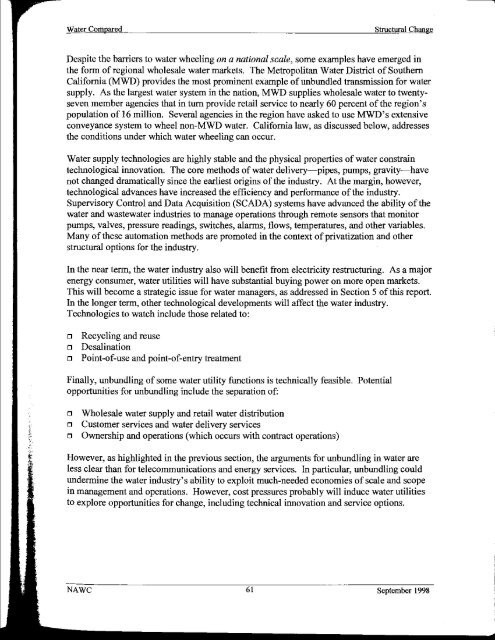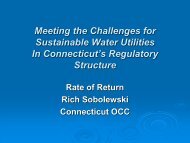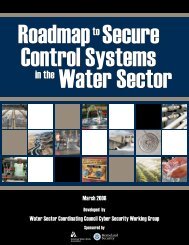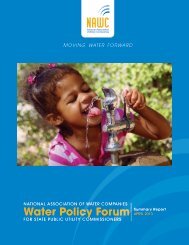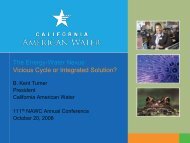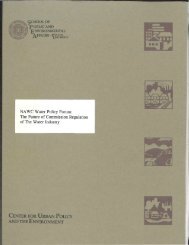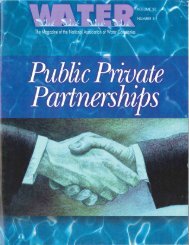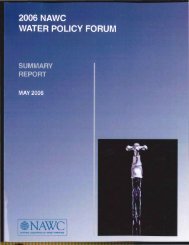BEECHER - NAWC
BEECHER - NAWC
BEECHER - NAWC
You also want an ePaper? Increase the reach of your titles
YUMPU automatically turns print PDFs into web optimized ePapers that Google loves.
Water ComparedStructoral ChangeDespite the barriers to water wheeling on a national scale, some examples have emerged inthe form of regional wholesale water markets. The Metropolitan Water District of SouthernCalifornia (MWD) provides the most prominent example of unbundled transmission for watersupply. As the largest water system in the nation, MWD supplies wholesale water to twentysevenmember agencies that in tum provide retail service to nearly 60 percent of the region'spopulation of 16 million. Several agencies in the region have asked to use MWD's extensiveconveyance system to wheel non-MWD water. California law, as discussed below, addressesthe conditions under which water wheeling can occur.Water supply technologies are highly stable and the physical properties of water constraintechnological innovation. The core methods of water delivery-pipes, pumps, gravity-havenot changed dramatically since the earliest origins of the industry. At the margin, however,technological advances have increased the efficiency and performance of the industry.Supervisory Control and Data Acquisition (SCADA) systems have advanced the ability of thewater and wastewater industries to manage operations through remote sensors that monitorpumps, valves, pressure readings, switches, alarms, flows, temperatures, and other variables.Many of these automation methods are promoted in the context of privatization and otherstructural options for the industry.In the near term, the water industry also will benefit from electricity restructuring. As a majorenergy consumer, water utilities will have substantial buying power on more open markets.This will become a strategic issue for water managers, as addressed in Section 5 of this report.In the longer term, other technological developments will affect the water industry.Technologies to watch include those related to:o Recycling and reuseo Desalinationo Point-of-use and point-of-entry treatmentFinally, unbundling of some water utility functions is technically feasible. Potentialopportunities for unbundling include the separation of:o Wholesale water supply and retail water distributiono Customer services and water delivery serviceso Ownership and operations (which occurs with contract operations)However, as highlighted in the previous section, the arguments for unbundling in water areless clear than for telecommunications and energy services. In particular, unbundling couldundermine the water industry's ability to exploit much-needed economies of scale and scopein management and operations. However, cost pressures probably will induce water utilitiesto explore opportunities for change, including technical innovation and service options.61 September 1998


